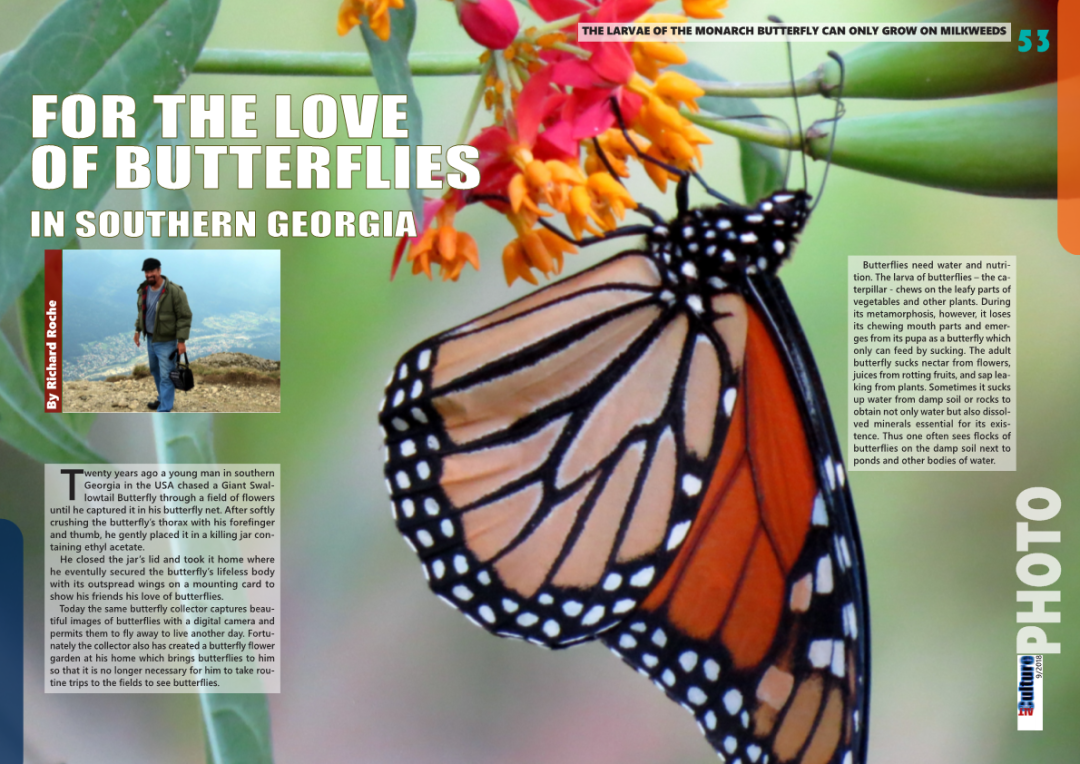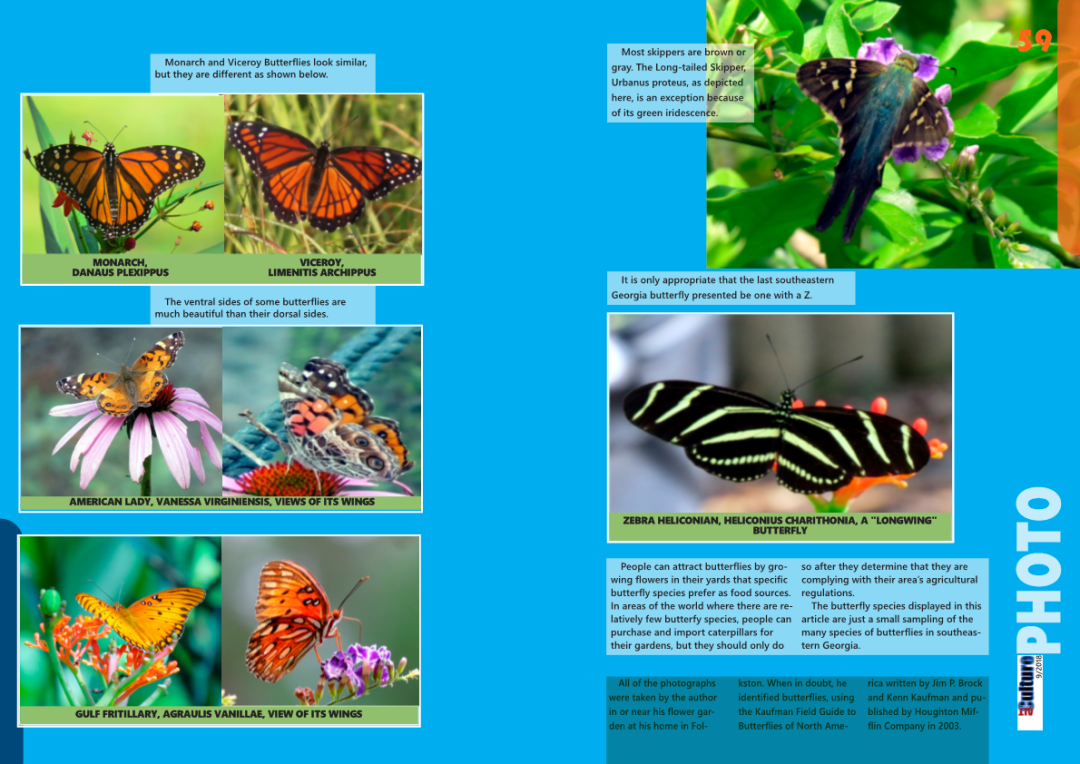FOR THE LOVE OF BUTTERFLIES IN SOUTHERN GEORGIA
By Richard Roche
Twenty years ago a young man in southern Georgia in the USA chased a Giant Swallowtail Butterfly through a field of flowers until he captured it in his butterfly net. After softly crushing the butterfly’s thorax with his forefinger and thumb, he gently placed it in a killing jar containing ethyl acetate.
He closed the jar’s lid and took it home where he eventully secured the butterfly’s lifeless body with its outspread wings on a mounting card to show his friends his love of butterflies.
Today the same butterfly collector captures beautiful images of butterflies with a digital camera and permits them to fly away to live another day. Fortunately the collector also has created a butterfly flower garden at his home which brings butterflies to him so that it is no longer necessary for him to take routine trips to the fields to see butterflies.
Butterflies need water and nutrition. The larva of butterflies – the caterpillar – chews on the leafy parts of vegetables and other plants. During its metamorphosis, however, it loses its chewing mouth parts and emerges from its pupa as a butterfly which only can feed by sucking. The adult butterfly sucks nectar from flowers, juices from rotting fruits, and sap leaking from plants. Sometimes it sucks up water from damp soil or rocks to obtain not only water but also dissolved minerals essential for its existence. Thus one often sees flocks of butterflies on the damp soil next to ponds and other bodies of water.

Particular species of butterflies and caterpillars can only thrive on particular species of plants. Therefore, the diversity of butterfly species in an area is dependent upon the diversity of plants. People’s preference for growing a few species of plants and their use of broad-spectrum herbicides and insecticides severely limit the diversity of butterfly species.
The people in southern Georgia are fortunate because they have a lot uncultivated land which sustains approximately 130 butterfly species. While these butterflies can be found in uncultivated areas, they can also be attracted to gardens by plants such as the Butterfly Bush, Purple Coneflower, Milkweed, Field Thistles, Verbena, Black-eyed Susan, Bee Balm, and Salvia; respectively flowering plants from the genera of Buddleia, Echinacea, Asclepias, Cirsium, Verbena, Rudbeckia, Monarda, and Salvia. Of course, people need a variety of flowering plants in their gardens to attract a variety of butterflies, but they should also determine which flowers are best for their specific location. They can do this by observing which flowers in and outside of their gardens attract butterflies and asking local butterfly lovers what flowers attract butterflies in their yards. This article will address only some of the butterflies in southern Georgia.

Note: The Pipevine Swallowtail, Battus philenor, and Polydamus Swallowtail, Battus polydamas, are the other two Swallowtail Butterfly species in southern Georgia.
The butterflies depicted below are just two of about a half-dozen sulfur butterflies in southern Georgia. Sulfur butterflies are often difficult to distinguish from one another. The Cloudless Sulfur Butterfly, as a male is bright yellow, but as a female it is sometimes greenish white and therefore, more easily identifiable.
Not all butterflies are colorful, as shown by the following photographs:

Monarch and Viceroy Butterflies look similar, but they are different as shown below.
The ventral sides of some butterflies are much beautiful than their dorsal sides.
Most skippers are brown or gray. The Long-tailed Skipper, Urbanus proteus, as depicted here, is an exception because of its green iridescence.
Not all butterflies are colorful, as shown by the following photographs:
Monarch and Viceroy Butterflies look similar, but they are different as shown below.
The ventral sides of some butterflies are much beautiful than their dorsal sides.
It is only appropriate that the last southeastern Georgia butterfly presented be one with a Z.

People can attract butterflies by growing flowers in their yards that specific butterfly species prefer as food sources. In areas of the world where there are relatively few butterfy species, people can purchase and import caterpillars for their gardens, but they should only do so after they determine that they are complying with their area’s agricultural regulations.
The butterfly species displayed in this article are just a small sampling of the many species of butterflies in southeastern Georgia.
_____________________________________________
All of the photographs were taken by the author in or near his flower garden at his home in Folkston. When in doubt, he identified butterflies, using the Kaufman Field Guide to Butterflies of North America written by Jim P. Brock and Kenn Kaufman and published by Houghton Mifflin Company in 2003.

